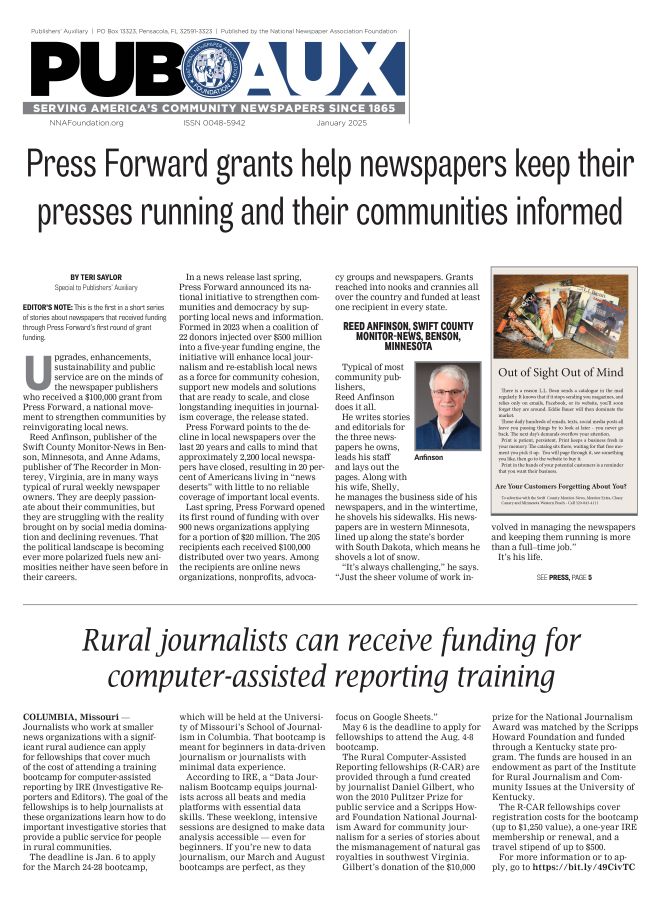Rural communities might not know their local hospitals are in trouble
May 9, 2016
By Al Cross
Into the Issues
If your rural hospital is in trouble, it’s not alone. At least 66 rural hospitals have closed in the last six years, because of a combination of factors, such as changes in federal reimbursement and patients’ increasing preference for larger hospitals. About 300 are in financial straits, states the National Rural Health Association.
Is your hospital one of them? Could it be? Which of those factors are affecting it most? Do you know how to put its problems in a national context so you and your readers can better understand them?
The troubles of rural hospitals can be hard for rural news media to cover in detail, partly because they are special kinds of businesses and their managers and boards are often unwilling to be forthcoming about problems. Sometimes it’s difficult because your hospitals might be hampered by managerial shortcomings that may follow local tradition but hurt the bottom line.
It’s important to get managers and board members to open up, because few local institutions are as important, or, in some communities, as much at risk. To do that, you must arm yourself with some basic knowledge so you know what questions to ask.
One place you can start learning more about rural hospitals and their problems is The Rural Blog, which has published more than 300 aggregated stories about hospitals in the last nine years. Last year, stories about rural hospitals led the list of most-read topics on the blog.
Two recent stories on The Rural Blog, at http://irjci.blogspot.com are good examples of how to cover rural hospitals.
The stories were written by Harris Meyer of Modern Healthcare, but they were written for a general audience. Both were about small hospitals in Appalachia, but their problems are common across the nation.
At the Pineville Community Hospital in Kentucky, which had hired a management company to save it, Meyer found an administrator who was willing to be frank about how he is doing it—even to the point of telling an older surgeon that it was time for him to retire.
Meyer walked around the hospital with the chief nursing officer, and they encountered an internist who vented to her “about some of the changes being asked of him.” The nursing officer said later, “We have an older medical staff, and they are set in their ways.”
See what you can find out just by walking around? And Meyer went beyond the staff, talking to patients, board members and community leaders who “see the Pineville hospital’s future as pivotal to the future of the town,” as he put it. Too many times, stories about trouble at hospital are done too late, after it’s too late to save the hospital.
Our excerpt of Meyer’s Pineville story is on The Rural Blog at http://bit.ly/1VAOzhg. The full story is available with free registration. If you’re really interested in covering health care, Modern Healthcare is a good source for background knowledge.
Meyer’s other story was on the Jellico (TN) Community Hospital, which serves many Kentuckians because it’s near the Kentucky border. Tennessee has not expanded Medicaid under federal health reform, but Kentucky has, and that has helped keep the hospital afloat. Our excerpt of Meyer’s story is at http://bit.ly/26e9wSg.
In states that have not expanded Medicaid, hospitals are the leading pleaders for it, because it brings them more business and reduces the write-offs they make for indigent care. That’s just one example of how state policy can affect local hospitals.
Health reform isn’t a cure-all. Although it has decreased the number of uninsured Americans and charity cases at hospitals, it has also led to an increase in the number of high deductibles they can’t collect, a particular problem in rural areas where hospitals are already struggling financially. John Lauerman reported on that for Bloomberg Business, and we excerpted it at http://bit.ly/1pfAk2O.
Many rural hospitals have closed their maternity facilities, a phenomenon reported by Kaiser Health News, another excellent source of story tips and background knowledge about health care. Our excerpt of that story is at http://bit.ly/1Vif62u.
Early this year, iVantage Health Analytics reported the 210 “most vulnerable” rural hospitals by state, along with data on critical-access hospitals (a definition you need to know) and data on how many health-care and community jobs the hospitals provide. We reported on it at http://bit.ly/20VKW4M.
In reporting on hospitals’ problems, it’s also important to report on those that do it right. We did that a few months ago, excerpting a report that listed the nation’s top hospitals, which included 24 rural hospitals. Those could be good examples of how to address problems. It’s at http://bit.ly/1Ss4CK1.
If you would like help reporting on hospitals or other facets of health care, please ask us. We’re at 859-257-3744 and al.cross@uky.edu. In addition to The Rural Blog, we publish Kentucky Health News, which includes original reporting and other story ideas, approaches and sources. It’s at http://kyhealthnews.blogspot.com.
Al Cross edited and managed weekly newspapers before spending 26 years at The (Louisville) Courier-Journal and serving as president of the Society of Professional Journalists. Since 2004 he has been director of the Institute for Rural Journalism and Community Issues, based at the University of Kentucky. See www.RuralJournalism.org.







